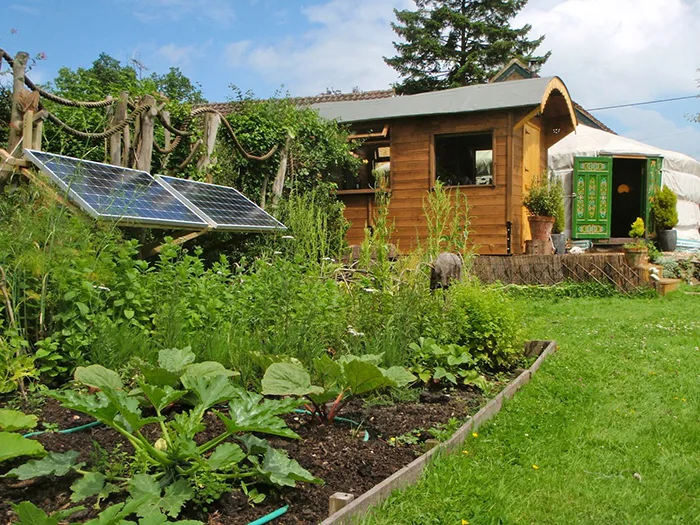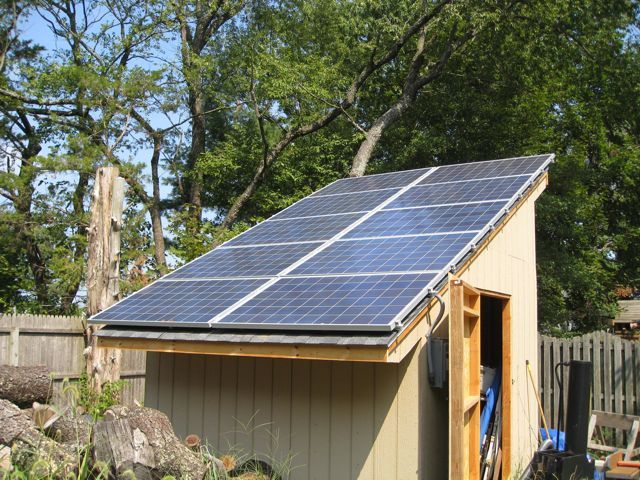Welcome to the world of thriving off-grid living, where permaculture land management practices come together to create a harmonious and sustainable lifestyle.
In this comprehensive guide, you’ll learn how to design and maintain your very own edible landscape, featuring productive gardens, fruit trees, and ecosystem services that nurture both body and soul.
Say goodbye to reliance on industrialized food systems and hello to a regenerative future, where the land becomes your greatest ally in achieving self-sufficiency and true well-being.
Let’s dive into the world of permaculture and discover how you can thrive off the grid with practical wisdom and time-tested techniques that promote healthy living for all.
Design your landscape for perpetual no-work maintenance
By using permaculture principles, you can design your landscape to require minimal maintenance once established. This includes creating guilds of plants that work well together, using companion planting to reduce pests and diseases, and using raised beds and hugel mounds to improve soil structure and fertility.
One key approach is to create guilds of plants that complement each other, fostering a resilient ecosystem.
For example, pairing nitrogen-fixing legumes like clover or beans with nectar-rich flowers like sunflowers or zinnias encourages biodiversity and balanced nutrient cycles.
Companion planting is another effective strategy, placing plants with shared pest and disease resistance properties together to minimize maintenance inputs.
Elevating your beds with raised structures or hugel mounds can also enhance soil fertility and structure, supporting long-term productivity and health.
By applying these permaculture design principles, your landscape will become more self-sustaining, requiring less maintenance over time.
Use perennial polycultures instead of annual monocultures
Perennial crops such as fruit trees, nut trees, and perennial vegetables require less maintenance and produce more food over time. These crops also provide habitat for beneficial insects and animals, which helps to maintain ecosystem balance.
Absolutely!
Perennial crops such as fruit trees, nut trees, and perennial vegetables are a wise investment for any garden or farm.
Not only do they require less maintenance than annual crops, but they also produce more food over time.
Unlike annuals, which must be replanted every year, perennials can be harvested multiple times without the need for constant replanting.
This means that once established, perennial crops can provide a bountiful harvest with minimal effort, freeing up your time to focus on other tasks or simply enjoying the fruits of your labor.
But the benefits of perennial crops don’t stop there.
These crops also provide habitat for beneficial insects and animals, which helps to maintain ecosystem balance.
For example, a fruit tree can provide shelter and food for birds, while also attracting beneficial insects like bees and butterflies.
This creates a diverse and thriving ecosystem that is more resilient to pests and diseases, and less reliant on harmful chemicals or fertilizers.
By incorporating perennial crops into your garden or farm, you can not only increase your food production, but also promote a healthy and sustainable ecosystem.
Grow a diversity of crops for year-round production
By growing a wide variety of crops, you can ensure a constant supply of fresh, nutritious food throughout the year. This includes vegetables, fruits, nuts, grains, and legumes.
Growing a wide variety of crops is essential for ensuring a constant supply of fresh, nutritious food throughout the year.
By planting a diverse range of vegetables, fruits, nuts, grains, and legumes, you can enjoy a bounty of healthy and delicious produce, no matter the season.
In the spring, you can harvest fresh greens like kale and spinach, followed by juicy tomatoes, cucumbers, and peppers as the weather warms up.
In the summer, enjoy an abundance of vine-ripened tomatoes, leafy herbs like basil and cilantro, and sweet, juicy fruits like peaches and berries.
As the autumn months roll in, the season shifts to heartier root vegetables like carrots and beets, as well as crunchy Brussels sprouts and sweet potatoes.
And in the winter, you can rely on stored crops like apples, potatoes, and squash to keep you nourished and satisfied.
By growing a wide variety of crops, you not only ensure a year-round supply of fresh, healthy food, but also the opportunity to experiment with new recipes and culinary creations.
Use mulch to retain moisture and suppress weeds
Mulch can help to retain moisture in the soil, suppress weeds, and regulate soil temperature. It also improves soil health by adding organic matter and habitat for beneficial insects and microorganisms.
Mulch is a versatile and effective tool for improving soil health and boosting plant growth.
One of its primary benefits is retaining moisture in the soil.
By covering the soil surface, mulch helps to prevent evaporation and keep the soil consistently moist, especially during hot and dry weather.
This is particularly important for vegetables, fruits, and flowers that require adequate moisture to thrive.
In addition to retaining moisture, mulch also helps to suppress weeds.
Weeds compete with your desired plants for water, nutrients, and sunlight, and can significantly diminish their growth and productivity.
By covering the soil surface with mulch, you can prevent weeds from sprouting and reduce the need for frequent weeding.
Furthermore, mulch regulates soil temperature, keeping it cooler during hot weather and warmer during cold weather.
This helps to extend the growing season and provides a more consistent environment for your plants to grow.
Moreover, mulch improves soil health by adding organic matter and habitat for beneficial insects and microorganisms.
As mulch breaks down, it adds nutrients and organic matter to the soil, which improves its structure and fertility.
The mulch layer provides a habitat for beneficial insects like bees and butterflies, as well as microorganisms like bacteria and fungi, which are essential for healthy plant growth.
By incorporating mulch into your gardening routine, you can enjoy healthier plants, extended growing seasons, and a more productive and thriving garden.
Use cover crops to improve soil fertility and biodiversity
Cover crops such as clover, rye, and vetch help to improve soil fertility and biodiversity. They also provide habitat for beneficial insects and microorganisms.
Cover crops such as clover, rye, and vetch are an essential component of sustainable agriculture, as they help to improve soil fertility and biodiversity.
By planting these cover crops in between cash crops or in marginal land, farmers can enhance the soil’s nutrient content and structure, increase the presence of beneficial microorganisms, and provide habitat for a diverse array of insects and other arthropods.
For example, clover is a legume that has nodules on its roots that contain symbiotic bacteria which fix nitrogen from the air into the soil, increasing the soil’s fertility and reducing the need for synthetic fertilizers.
Clover provides a source of high-quality organic matter when it is turned into the soil or composted.
Vetch, on the other hand, is a cool-season legume that can be used to improve soil fertility and biodiversity in the spring, and it also provides habitat for beneficial insects like bees and butterflies.
Meanwhile, rye is a versatile cover crop that can be used to protect the soil from erosion during the winter months, increase soil organic matter, and provide habitat for beneficial microorganisms and arthropods.
By integrating cover crops like clover, rye, and vetch into their farming systems, farmers can improve the health and productivity of their soils while also promoting biodiversity and ecosystem services.
Incorporate animals into your permaculture system
Animals such as chickens, ducks, and goats can provide a source of milk, eggs, and meat, as well as help to maintain the landscape and manage weeds and pests.
Keeping chickens, ducks, and goats on your homestead can provide a steady supply of fresh milk, eggs, and meat, all while helping to maintain the landscape and manage weeds and pests.
Chickens are known for their ability to consume weeds and insects, while goats can help to clear brush and maintain the integrity of fence lines.
Ducks, with their webbed feet and sharp beaks, can easily control pest populations in ponds and wetlands.
All of these animals can be trained to graze on specific areas of the property, helping to maintain the health of the landscape and improve soil quality.
By integrating these animals into your homestead, you can not only provide a source of fresh food, but also create a more sustainable and self-sufficient living environment.
Harvest and use rainwater
By collecting and using rainwater, you can reduce your reliance on town water and improve the resilience of your permaculture system.
Collecting and utilizing rainwater is an excellent method to enhance the resilience of your permaculture system and minimize your reliance on town water.
Not only does rainwater collection save you money on your water bill, but it also reduces your environmental impact by harvesting a resource that would otherwise be wasted.
Rainwater can be used for a variety of purposes in your permaculture system, such as irrigating crops, refilling ponds and lakes, and even flushing toilets and washing machines.
Incorporating rainwater harvesting systems into your design can create a closed-loop system where wastewater is treated and reused, maximizing resource efficiency.
By investing in rainwater collection systems and greywater reuse, you can strengthen the resilience of your permaculture system while also reducing your reliance on external water sources.
With this approach, you can be more self-sufficient and better equipped to handle droughts, floods, and other challenges that may arise in your climate.
Overall, harnessing the power of rainwater is an intelligent decision for any forward-thinking permaculture enthusiast looking to create a more sustainable, self-sufficient ecosystem.
Use renewable energy sources
By using renewable energy sources such as solar and wind power, you can reduce your reliance on fossil fuels and improve the sustainability of your permaculture system.
By harnessing renewable energy sources like solar and wind power, you can dramatically reduce your reliance on fossil fuels and take a significant step towards a more sustainable and eco-friendly permaculture system.
Not only does this reduce your carbon footprint and mitigate the harmful effects of climate change, but it also offers numerous practical benefits.
For instance, solar panels can provide consistent and reliable electricity for powering your homestead’s lighting, appliances, and irrigation systems, while wind turbines can generate power even on cloudy or windless days.
Moreover, these renewable energy sources are becoming increasingly affordable and accessible, making them a wise investment for any serious permaculture enthusiast.
By adopting renewable energy solutions, you’ll not only lower your energy costs but also help preserve the environment and ensure a more sustainable future for your permaculture system.
Want More? Dive Deeper Here!
Hey there! If you’re the type who loves going down the rabbit hole of information (like we do), you’re in the right spot. We’ve pulled together some cool reads and resources that dive a bit deeper into the stuff we chat about on our site. Whether you’re just killing time or super into the topic, these picks might just be what you’re looking for. Happy reading!






